Resources
Dr. Nancy Lynne Westfield hosts Dr. Emilie Townes (Vanderbilt University - The Divinity School) and Dr. Valerie Bridgeman (Methodist Theological School in Ohio). In crisis times, the creative voice speaks to the soul. The scholarly voice does not have to eclipse the creative voice. As published poets and scholars, these womanists will talk about their creative process and its influence upon their scholarship. They will also read original works.
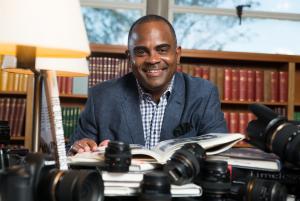
When I got my PhD in 1997 and began my teaching career we were just being introduced to PowerPoint. I like many others remember those days which have long since gone. Over my career we have moved from the use of PowerPoint to teaching in classrooms where students have laptops, tablets and phones. Students are engaging life through the screen. What does it mean to teach in an age where our students are being shaped by what they have in their hands? How do we focus our teaching in light of our student’s reality of living in an age where they are learning via moving and still images? How does our teaching align with how they see the world via Instagram, YouTube, TikTok and Facebook? We live in a world where, “…three hundred hours of YouTube video are uploaded every minute. Six billion hours of video are watched every month on the site, one hour for every person on earth. The 18–34 age group watches more YouTube than cable television. (And remember that YouTube was only created in 2005.)[1] “Every two minutes, Americans alone take more photographs than were made in the entire nineteenth century.”[2] We have become a world of image makers and these images have become our primary way to engage the world, learn about the world and our students are visual learners and much of our teaching is literate and oral. I propose that we embrace the visual world and learn as our students learn so that we can become more effective pedagogues. In his book How to See the World, Nicholas Mirzoeff articulates aspects of the contemporary visual age and provides insights about the history of visual media since 1930: As early as 1930, an estimated 1 billion photographs were being taken every year worldwide. Fifty years later, it was about 25 billion a year, still taken on film. By 2012, we were taking 380 billion photographs a year, nearly all digital. One trillion photographs were taken in 2014. There were some 3.5 trillion photographs in existence in 2011, so the global photography archive increased by some 25 percent or so in 2014. In that same year, 2011, there were 1 trillion visits to YouTube. Like it or not, the emerging global society is visual. All these photographs and videos are our way of trying to see the world. We feel compelled to make images of it and share them with others as a key part of our effort to understand the changing world around us and our place within it.[3] So, what does this mean for me and what does it mean for us? For me it has meant a complete shift in how I teach. I have moved from thinking first about lecture, words, reading and content to thinking visually. How will I engage the eyes of my students so that I can touch the mind of my students? How can I help them see what we are thinking about in this course as it lives in the world as an image that expands their imagination? Imagining the image expands the imagination of students who live in a world of images. The image becomes the lens by which my students enter this world on a daily basis therefore I start with them in my viewfinder. I see them as they see the world and because this is their starting point it is my starting point. I am teaching with them in sight, I see them looking at their phones, I see what they see and as they see so that I can teach in the visual language that they understand. My students sleep with their phones beside their beds and before they brush their teeth in the morning, they pick up their phones and start their day looking at images. I want my courses and my content to be on their home-screens. This is the world in which we live, this is the age in which we are called to teach. I had to change how I see my teaching so that my students could see what I am trying to get them to engage. This has been a major shift for me. It called me to go back go to school to learn how to see so that I could become an effective teacher in the visual age. I talk about my shift and embrace of the world in which we live in the short video that accompanies this Blog. In this video we are celebrating my installation in an endowed chair. The video speaks to the shift I have made, and I invite you to consider. What does it look like to teach in the visual age (pun intended)? Teaching in the Visual Age: Dr. Ralph Basui Watkins from Ralph Watkins on Vimeo. [1] Mirzoeff, Nicholas. How to See the World (4). Basic Books. Kindle Edition. [2] Mirzoeff, Nicholas. How to See the World (4). Basic Books. Kindle Edition. [3] Mirzoeff, Nicholas. How to See the World (4-5). Basic Books. Kindle Edition. *Original Blog published on December 11, 2019
What is spiritual formation for teachers? Teaching during the chaos of the pandemic is soul work. It requires a soul pedagogy. This discussion provides insights into nurturing the spiritual awareness of teachers to better support and assist the learner. The conversation provides practices for the online classroom, encourages teachers to risk creativity and imagination, and suggests that formation or deformation of students is a matter of attentiveness, flexibility and freedom.
Teaching during the pandemic requires we care for our students as well as ourselves. This podcast features a conversation with Rachel Harding (University of Colorado, Boulder) about rebuilding spiritual practices for this uncharted moment.
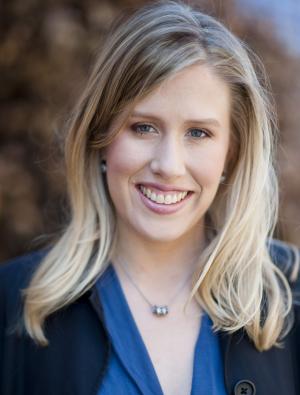
In a seminary setting with a daily rule of prayer, students and professors can easily fall into a trap of distinguishing between teaching students how to advocate for justice in the “real world” and the “in-church” liturgy of prayer and worship of seminary life. At times, the liturgical rhythms might even appear to be an intellectual or temporal straitjacket: hindering the work of classroom learning or service to the community and work for justice. However, in my own experience teaching in both Roman Catholic and Episcopal/Anglican seminaries, where the traditional Christian liturgy of the hours determines the structures and rhythms of the students’ lives and learning, I have found that teaching social justice in synergy rather than opposition to the liturgical tide has provided opportunity for teaching social justice rather than a hinderance. In fact, this immersion in the liturgy can transform teaching social justice into an act of recollection and connection building, rather than creating an oppositional dynamic. This “calling to mind” in beginning to teach social justice which immersion in liturgy permits has two crucial components. First, the daily liturgy of the Roman Catholic and Anglican tradition provides substantial content for beginning to discuss and understand the need for social justice and its objects. While there are calls to pursue justice throughout the scripture, the liturgy of the hours or of Morning and Evening Prayer, creates a special focus on the book of Psalms. In these liturgies, students will generally read in unison throughout the entire book every month, and then turn around and do it again. This means that students begin and end almost every day with the cries to instantiate God’s justice which fill the Psalms in their mouths and in their minds. Beginning a pedagogical engagement with social justice in the Christian tradition therefore begins with an acknowledgement of the Word which is already in their mouth, and then broadens to seeking to understand that word in the context of the present day. This grounding of the classroom discussion of social justice in the liturgy is, of course, far from novel, but stretches back through the Christian tradition. Explaining this tradition and explicitly linking it to their own immersion liturgy then prepares students for the task of analogical translation into their own world, of the ways in which Christians, from John Chrysostom through abolitionists to the Oxford Movement to Oscar Romero, have seen the liturgy as the point of departure out into the world to seek justice and serve the poor. Just as important as starting a discussion on what God’s justice might demand of them is helping them understand how their formation in the liturgy has better prepared them to work for social justice in the world. By its very nature, formation in liturgical worship demolishes the temptation to autonomy and the urge to seek the spotlight, and rather trains students to be communal, listen to others, and be patient with the small steps and slowly developing processes. For example, when students are taught how to chant the Psalms in choir, they learn that the goal is never to declaim, to take up the most space, to push their own voices forward. Rather, they are taught to listen to the tones and pitches of others, to join in the one communal sound, and to use their breath to sustain rather than project. In another example, students come to realize that the liturgy is only made possible by the invisible labor of the sacristans, who ensure that everything needed for the Eucharist celebration is clean, prepared, and its place, but who are never at the front or receive praise or applause. This approach is the exact opposite of what Martin Luther King, Jr. referred to in a famous homily a few months before his death as the “drum major instinct”: the urge to assume that you are better than other people because you are out in front and people notice you first (https://kinginstitute.stanford.edu/king-papers/documents/drum-major-instinct-sermon-delivered-ebenezer-baptist-church). Rather than surrendering to this instinct, King urged his listeners to walk in the steps of Jesus Christ, who disdained the drum major position in order to be faithful in the unacknowledged work of bringing about God’s justice in the world: feeding the hungry, clothing the naked, and visiting those in prison, rather than focusing on their own success or prominence in the eyes of those around them. Oriented properly, students formed in the liturgy have already developed the virtues and praxis which make this type of service which Dr. King describes possible. They are ready to pursue the slow work of justice, neither demanding the spotlight nor seeking to drown out fellow laborers with their own voices or opinions. Rather, they are already equipped for service, and the task of the teacher simply becomes how best to show them the way. *Blog Originally published October 21, 2020
Travel Information for Participants Already Accepted into the WorkshopGround Transportation: About a week prior to your travel you will receive an email from Beth Reffett (reffettb@wabash.edu) with airport shuttle information. This email includes the cell phone number of your driver, where to meet, and fellow participants with arrival times. Please print off these instructions and carry them with you.
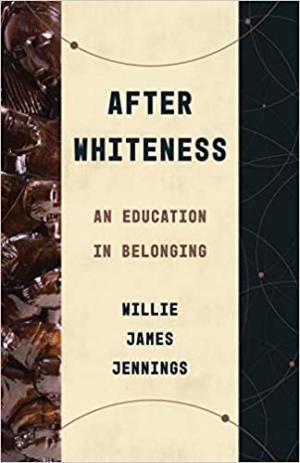
In this inaugural volume of the Theological Education between the Times series, Willie James Jennings shares the insights gained from his extensive experience in theological education, most notably as the dean of a major university’s divinity school—where he remains one of the only African Americans to have ever served in that role. He reflects on the distortions hidden in plain sight within the world of education but holds onto abundant hope for what theological education can be and how it can position itself at the front of a massive cultural shift away from white, Western cultural hegemony. This must happen through the formation of what Jennings calls erotic souls within ourselves—erotic in the sense that denotes the power and energy of authentic connection with God and our fellow human beings.
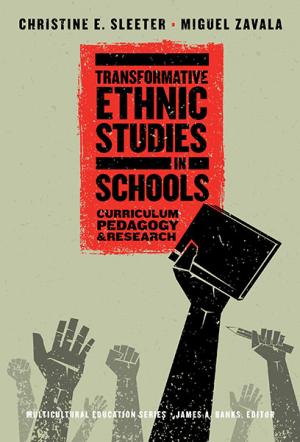
This timely and compelling book conceptualizes Ethnic Studies not only as a vehicle to transform and revitalize the school curriculum but also as a way to reinvent teaching. Drawing on Sleeter’s research review on the impact of Ethnic Studies commissioned by the National Education Association (NEA), the authors show how the traditional curriculum’s Eurocentric view of the world affects diverse student populations. The text highlights several contemporary exemplars of curricula—from classroom level to district or state-wide—illustrating core concepts in Ethnic Studies across a variety of disciplines and grade levels. A final chapter considers how research on P–12 ethnic studies can be conceptualized and conducted in ways that further both advocacy and program sustainability. Transformative Ethnic Studies in Schools is essential reading for educators working to transform schools by rehumanizing learning spaces for all students. (From the Publisher)
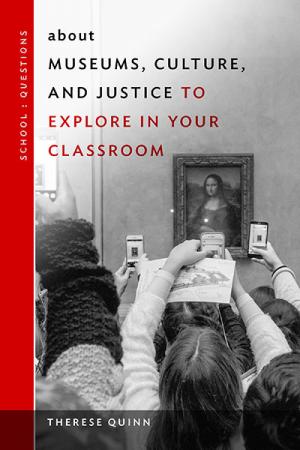
Museums are public resources that can offer rich extensions to classroom educational experiences, from tours through botanical gardens to searching for family records in the archives of a local historical society. With clarity and a touch of humor, Quinn presents ideas and examples of ways that teachers can use museums to support student exploration while also teaching for social justice. Topics include disability and welcoming all bodies, celebrating queer people’s lives and histories, settler colonialism and decolonization, fair workplaces, Indigenous knowledge, and much more. This practical resource invites classroom teachers to rethink how and why they are bringing students to museums and suggests projects for creating rich museum-based learning opportunities across an array of subject areas. (From the Publisher)
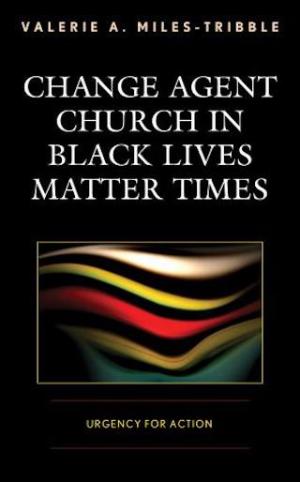
Volatile social dissonance in America’s urban landscape is the backdrop as Valerie A. Miles-Tribble examines tensions in ecclesiology and public theology, focusing on theoethical dilemmas that complicate churches’ public justice witness as prophetic change agents. She attributes churches’ reticence to confront unjust disparities to conflicting views, for example, of Black Lives Matter protests as “mere politics,” and disparities in leader and congregant preparation for public justice roles. As a practical theologian with experience in organizational leadership, Miles-Tribble applies adaptive change theory, public justice theory, and a womanist communitarian perspective, engaging Emilie Townes’s construct of cultural evil as she presents a model of social reform activism re-envisioned as public discipleship. She contends that urban churches are urgently needed to embrace active prophetic roles and thus increase public justice witness. “Black Lives Matter times” compel churches to connect faith with public roles as spiritual catalysts of change. (From the Publisher)